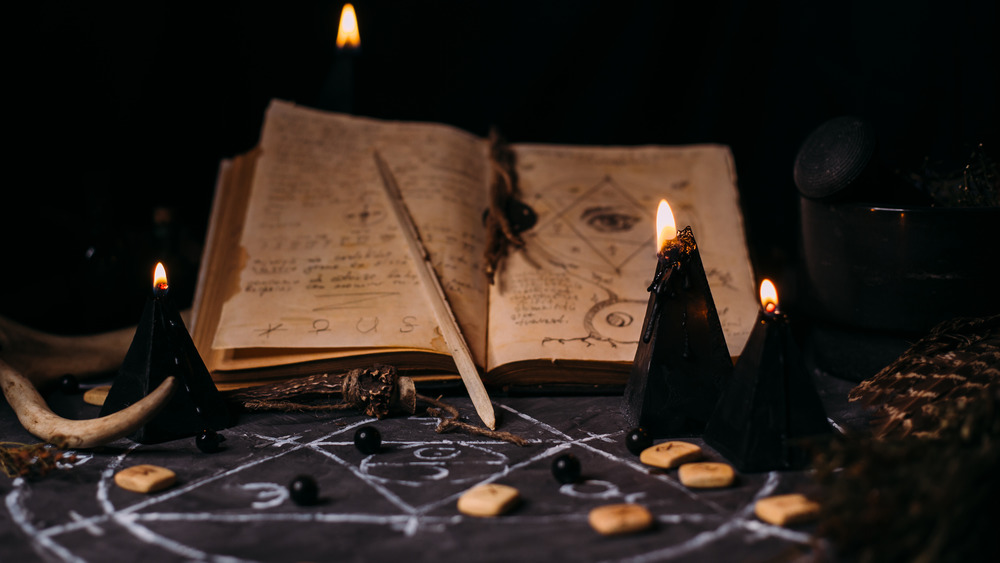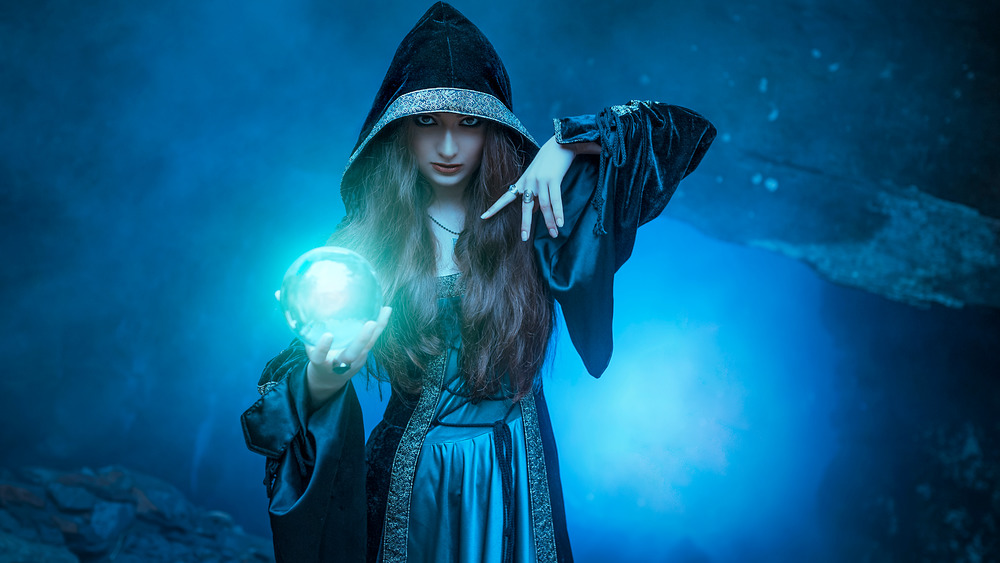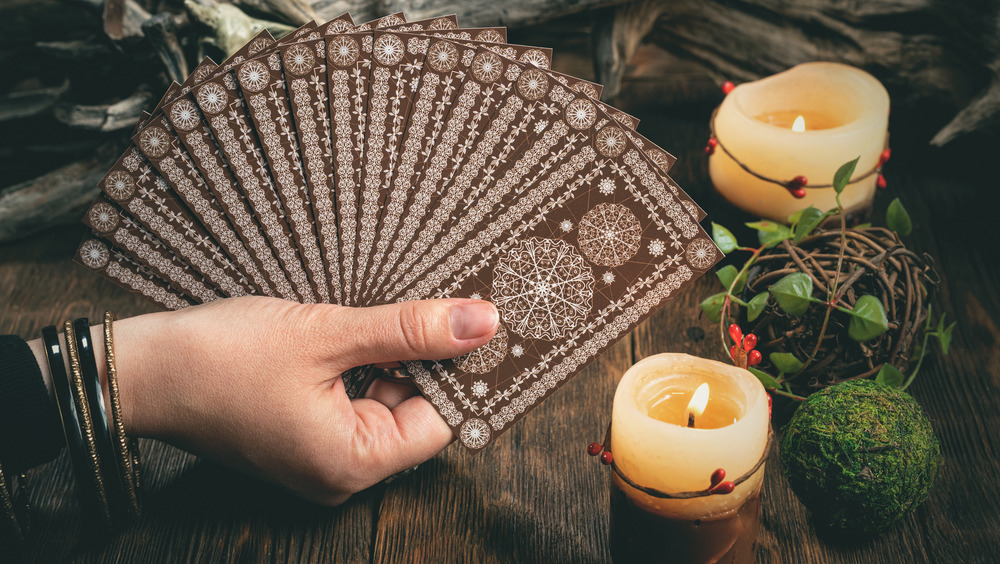The Witch Who Once Lived At Buckingham Palace
Buckingham Palace hasn't always been the home for Britain's royal family. The palace was first constructed in the early 1700s as the home of the 3rd Earl of Mulgrave and didn't become the residence of England's kings and queens until King George III bought the place in 1760, as History Extra explains. Before the royal family moved into Buckingham, their primary residence was St. James's Palace, and before that was a whole list of palaces and castles we're not going to bore you with.
Where Buckingham Palace stands today was a completely different landscape back at the turn of the 15th century, when our story takes place. A small village by the name of Eye Cross stood in the manor of Eye on the lands where Buckingham Palace has now been built. Much of the land, as The Strange History of Buckingham Palace by Patricia Wright points out, was a swampy marsh that drew water from the Tyburn river. The setting lends itself well to this tale. Living in Eye Cross was a woman named Margarie Gourdemaine (sometimes spelled Margery Jourdemayne), who would later become known as "The Witch of Eye."
Witchcraft drew Gourdemaine in from a young age
Margarie Gourdemaine was born in 1390 during a time when witchcraft was probably an acceptable thing. According to UK Parliament, witchcraft wasn't outlawed until the mid-1500s. Before that, "witches" were often midwives or herbal healers, according to the American Journal of Public Health, or they spoke of prophecies and retained their pre-Christian pagan heritage. As for Gourdemaine, fascination with the art of witchcraft seemed to come as naturally as sketching or painting came to others.
The Strange History of Buckingham Palace claims that Gourdemaine had seen potions, charms, spells, the works at the Westminster markets when she was a young girl. It drew her in, and by the time she'd grown from girl to woman, Gourdemaine had become quite efficient at sneaking away to learn the tricks and trades of the witches who set up their shops at the market. This didn't exactly make the woman popular with her peers. Witchcraft may have been a fairly common practice, but so was Christianity, and many Christians wouldn't look favorably on the pagan practitioners.
For much of her life, witchcraft hadn't been a real problem. She had clients, and the monks who served as her landlords didn't seem to mind her trade. Until what wasn't a real problem became a real problem.
Sorcery and the duchess of Gloucester
It's possible that the stories of Margarie Gourdemaine as a witch are just that: stories. No one can say for certain that history wasn't bent to turn Gourdemaine into something that served a political purpose at the time, but it is generally accepted that she was known as "The Witch of Eye."
Britain was going through turmoil in the early 1400s. King Henry V had died and left his reign in the hands of his one-year-old son. According to the Sunday Express, the "patriotic hysteria" that swept the country led to a controversy, if not "conspiracy," that involved Gourdemaine and the Duchess of Gloucester.
It's said that Eleanor, Duchess of Gloucester, was unhappy that an infant was in charge of the country, so she enacted the help of a sorceress to take care of her problem. If the infant were to succumb to a tragedy, Eleanor would be queen, and with Gourdemaine's help, she could make this happen. Gourdemaine, according to the Journal of Medieval History, had already been charged with witchcraft the previous decade, around the time of Henry V's death, and she'd been allowed her freedom only on the condition that she gave up sorcery for good. Her alleged mystical service to the Duchess of Gloucester would be her second (and probably very final) visit to the courts under charges of witchcraft.
Charges, trial, and execution
In the duchess's attempt to learn her fate, she went to The Witch of Eye for a fortune-telling, during which, according to the Sunday Express, Gourdemaine told the duchess, "You'll be queen by June" (or words to that effect). That was a pretty specific time period, and the prediction made it look like Gourdemaine and the duchess were plotting the young king's death. Other accusations would be laid on The Witch of Eye as well. It would be alleged that Gourdemaine used witchcraft to confuse the duchess's husband, and that she supplied the duchess with a wax fetish of the king that could be used to magically cause his death, according to The Strange History of Buckingham Palace.
The rumors of sorcery against the king spread, eventually leading to the capture and trial of both the Duchess of Gloucester and Gourdemaine. Both were found guilty on multiple charges, but only one was condemned to die. The duchess, whose conspiracy allegedly created the entire situation, was sentenced to life in prison, while Gourdemaine got the death sentence. The Witch of Eye was one of the few witches who were actually burned at the stake, and there's a chance that you'll inadvertently walk over the site of her death if you ever visit Buckingham Palace. Another life claimed by an actual witch hunt and religious bigotry, if not outright political conspiracy. Gourdemaine's story had it all.



